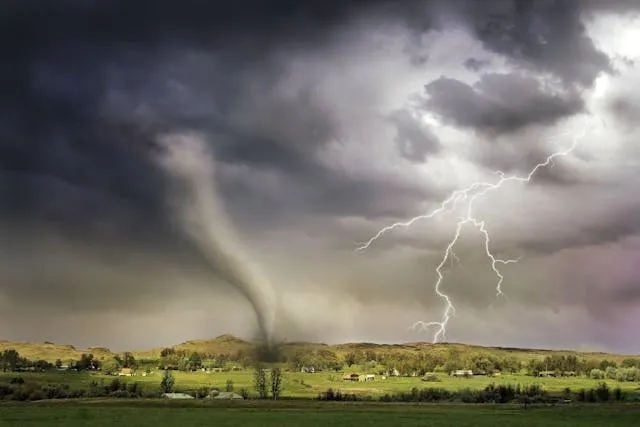
Unexpected disasters can halt operations, resulting in financial loss and long-term damage to a business. Unpredictable natural disasters like earthquakes, floods, wildfires, and storms leave businesses scrambling to recover. Businesses run operational risk, data loss, and infrastructure damage without a well-organized plan. Protecting assets, staff, and important data guarantees continuity even in the face of disruption. Before a disaster strikes, strengthening preparedness initiatives helps companies reduce risks, recover efficiently, and maintain stability when unanticipated events arise.
Establishing a Comprehensive Emergency Response Plan
A well-defined emergency response plan is the foundation for disaster preparedness. Every company has to have well-defined procedures to guard staff members, guard assets, and guarantee quick recovery. Based on industry and location, the strategy should spot possible hazards such as supply chain interruptions, building damage, and power outages. Employee safety remains the top priority and calls for specific evacuation routes, emergency contacts, and crisis management training programs. To transmit instructions and updates in real-time, communication systems must be in place. Coordinating with utility companies, first responders, and municipal authorities improves response efforts and speeds recovery. Frequent drills and changes to plans guarantee that staff members remain prepared to operate quickly under duress. A well-organized emergency response system offers clarity, thereby avoiding uncertainty and delays if a disaster strikes.
Strengthening Infrastructure and Securing Assets
Minimizing financial loss during a disaster depends on physical asset protection. Buildings, machinery, and supplies call for defenses against flooding, fire, or severe storms. Fire suppression systems, windows resistant to storms, and reinforced buildings lower damage hazards. In the case of grid breakdowns, backup power sources—generators or solar energy solutions—help to avoid operational downtime. Stored in waterproof and fireproof safes should be critical papers, contracts, and inventory data. Digital copies stored in cloud storage provide an additional layer of security. Companies with manufacturing facilities or warehouse operations benefit from having impact-resistant barriers to secure machinery and supplies. Improving physical infrastructure safeguards investments and guarantees quick recovery with the least damage.
Implementing Data Protection and Recovery Strategies
Access to important data during a disaster determines business continuity. Operations could be completely disrupted by data loss resulting from physical damage, power outages, or system failures. Offsite storage, cloud-based solutions, and secure backup methods prevent permanent data loss. Businesses depending on digital infrastructure require secure servers and backup plans to maintain access to vital files and systems. Using IT disaster recovery solutions guarantees that companies can start operations right away. Among these fixes are failover systems that keep networks functioning during disturbances, cybersecurity measures, and automated data backups. By removing downtime, a well-organized IT recovery plan safeguards operational software, customer data, financial records, and operational tools. Companies that give data protection and recovery top priority continue to be strong even if natural disasters affect physical infrastructure.
Maintaining Supply Chain Resilience
Affecting both companies and consumers, a disrupted supply chain causes shortages of products, postponed services, and financial losses. Businesses depending on outside vendors or manufacturers have to have backup plans in place to guarantee continuity in unanticipated events such as natural disasters, geopolitical crises, or recessionary times. Maintaining emergency supply levels and choosing other vendors help to avoid sudden halts in output and service delivery. Developing close ties with distributors, suppliers, and logistics companies improves operational flexibility and allows companies to adjust when regular operations are disrupted. Contracts with several vendors help to lessen reliance on one source, therefore guaranteeing continued availability of necessary goods, components, and materials. By identifying vulnerabilities before they become significant, real-time tracking and predictive analytics help to further enhance supply chain resilience.
Securing Business Insurance and Financial Protection
Securing the appropriate insurance before a crisis strikes will determine financial recovery. Standard policies might not cover all damages, so companies have to choose solutions offering complete protection. Specialized catastrophe policies, corporate interruption coverage, and property insurance help to prevent losses from natural events. Comprehensive documentation of assets, inventory, and business activities simplifies the claims procedure and guarantees faster compensation. While companies recover, financial reserves and emergency money help with running expenses. Dealing with insurance companies and financial advisers helps to increase readiness so that companies stay financially steady even after major damage.
Conclusion
Natural disasters test businesses’ resilience, but proactive measures protect operations, employees, and critical assets. Strong disaster response plans, reinforced infrastructure, and safe data recovery techniques ensure continuity when disruptions occur. Businesses can recover swiftly and preserve stability by further reducing risks through the strengthening of supply chains and the acquisition of financial protection. Preparedness converts uncertainty into confidence, allowing operations to resume smoothly even in the most challenging circumstances.

